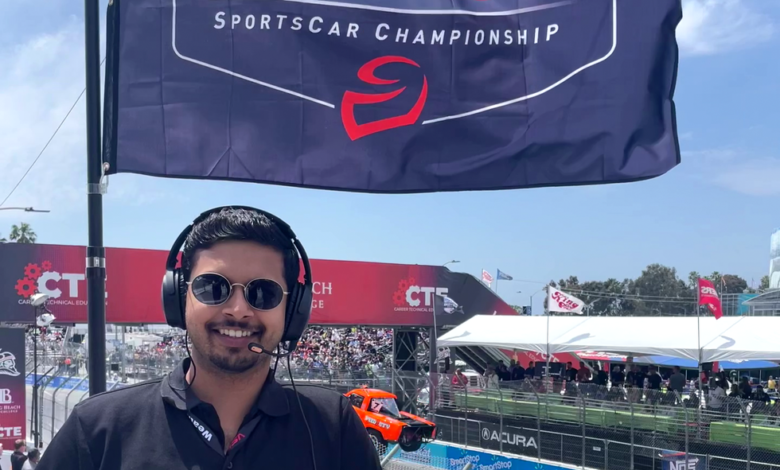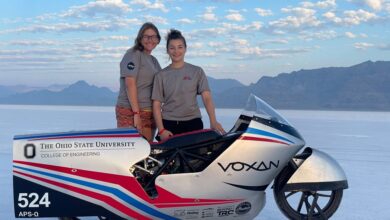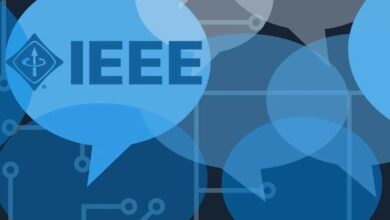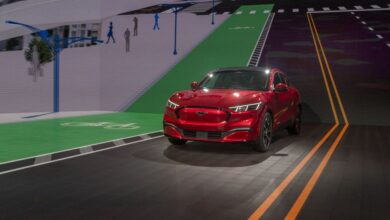A Bosch Engineer Speeds Hybrid Race Cars to the Finish Line

When it comes to motorsports, the need for speed isn’t only on the racetrack. Engineers who support race teams also need to work at a breakneck pace to fix problems, and that’s something Aakhilesh Singhania relishes.
Singhania is a senior applications engineer at Bosch Engineering, in Novi, Mich. He develops and supports electronic control systems for hybrid race cars, which feature combustion engines and battery-powered electric motors.
Aakhilesh Singhania
Employer:
Bosch Engineering
Occupation:
Senior applications engineer
Education:
Bachelor’s degree in mechanical engineering, Manipal Institute of Technology, India; master’s degree in automotive engineering, University of Michigan, Ann Arbor
His vehicles compete in two iconic endurance races: the Rolex 24 at Daytona in Daytona Beach, Fla., and the 24 Hours of Le Mans in France. He splits his time between refining the underlying technology and providing trackside support on competition day. Given the relentless pace of the racing calendar and the intense time pressure when cars are on the track, the job is high octane. But Singhania says he wouldn’t have it any other way.
“I’ve done jobs where the work gets repetitive and mundane,” he says. “Here, I’m constantly challenged. Every second counts, and you have to be very quick at making decisions.”
An Early Interest in Motorsports
Growing up in Kolkata, India, Singhania picked up a fascination with automobiles from his father, a car enthusiast.
In 2010, when Singhania began his mechanical engineering studies at India’s Manipal Institute of Technology, he got involved in the Formula Student program, an international engineering competition that challenges teams of university students to design, build, and drive a small race car. The cars typically weigh less than 250 kilograms and can have an engine no larger than 710 cubic centimeters.
“It really hooked me,” he says. “I devoted a lot of my spare time to the program, and the experience really motivated me to dive further into motorsports.”
One incident in particular shaped Singhania’s career trajectory. In 2013, he was leading Manipal’s Formula Student team and was one of the drivers for a competition in Germany. When he tried to start the vehicle, smoke poured out of the battery, and the team had to pull out of the race.
“I asked myself what I could have done differently,” he says. “It was my lack of knowledge of the electrical system of the car that was the problem.” So, he decided to get more experience and education.
Learning About Automotive Electronics
After graduating in 2014, Singhania began working on engine development for Indian car manufacturer Tata Motors in Pune. In 2016, determined to fill the gaps in his knowledge about automotive electronics, he left India to begin a master’s degree program in automotive engineering at the University of Michigan in Ann Arbor.
He took courses in battery management, hybrid controls, and control-system theory, parlaying this background into an internship with Bosch in 2017. After graduation in 2018, he joined Bosch full-time as a calibration engineer, developing technology for hybrid and electric vehicles.
Transitioning into motorsports required perseverance, Singhania says. He became friendly with the Bosch team that worked on electronics for race cars. Then in 2020 he got his big break.
That year, the U.S.-based International Motor Sports Association and the France-based Automobile Club de l’Ouest created standardized rules to allow the same hybrid race cars to compete in both the Sportscar Championship in North America, host of the famous Daytona race, and the global World Endurance Championship, host of Le Mans.
The Bosch motorsports team began preparing a proposal to provide the standardized hybrid system. Singhania, whose job already included creating simulations of how vehicles could be electrified, volunteered to help.
“I’m constantly challenged. Every second counts, and you have to be very quick at making decisions.”
The competition organizers selected Bosch as lead developer of the hybrid system that would be provided to all teams. Bosch engineers would also be required to test the hardware they supplied to each team to ensure none had an advantage.
“The performance of all our parts in all the cars has to fall within 1 percent of each other,” Singhania says.
After Bosch won the contract, Singhania officially became a motorsports calibration engineer, responsible for tweaking the software to fit the idiosyncrasies of each vehicle.
In 2022 he stepped up to his current role: developing software for the hybrid control unit (HCU), which is essentially the brains of the vehicle. The HCU helps coordinate all of the different subsystems such as the engine, battery, and electric motor and is responsible for balancing power requirements among these different components to maximize performance and lifetime.
Bosch’s engineers also designed software known as an equity model, which runs on the HCU. It is based on historical data collected from the operation of the hybrid systems’ various components, and controls their performance in real time to ensure all the teams’ hardware operates at the same level.
In addition, Singhania creates simulations of the race cars, which are used to better understand how the different components interact and how altering their configuration would affect performance.
Troubleshooting Problems on Race Day
Technology development is only part of Singhania’s job. On race days, he works as a support engineer, helping troubleshoot problems with the hybrid system as they crop up. Singhania and his colleagues monitor each team’s hardware using computers on Bosch’s race-day trailer, a mobile nerve center hardwired to the organizers’ control center on the race track.
“We are continuously looking at all the telemetry data coming from the hybrid system and analyzing [the system’s] health and performance,” he says.
If the Bosch engineers spot an issue or a team notifies them of a problem, they rush to the pit stall to retrieve a USB stick from the vehicle, which contains detailed data to help them diagnose and fix the issue.
After the race, the Bosch engineers analyze the telemetry data to identify ways to boost the standardized hybrid system’s performance for all the teams. In motorsports, where the difference between winning and losing can come down to fractions of a second, that kind of continual improvement is crucial.
Customers “put lots of money into this program, and they are there to win,” Singhania says.
Breaking Into Motorsports Engineering
Many engineers dream about working in the fast-paced and exciting world of motorsports, but it’s not easy breaking in. The biggest lesson Singhania learned is that if you don’t ask, you don’t get invited.
“Keep pursuing them because nobody’s going to come to you with an offer,” he says. “You have to keep talking to people and be ready when the opportunity presents itself.”
Demonstrating that you have experience contributing to challenging projects is a big help. Many of the engineers Bosch hires have been involved in Formula Student or similar automotive-engineering programs, such as the EcoCAR EV Challenge, says Singhania.
The job isn’t for everyone, though, he says. It’s demanding and requires a lot of travel and working on weekends during race season. But if you thrive under pressure and have a knack for problem solving, there are few more exciting careers.
IEEE Spectrum




